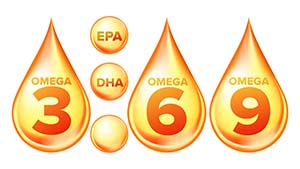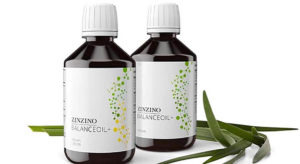Omega 3 fatty acids are an essential and healthful type of fat and they offer several health advantages. Fatty fish is a fine dietary source of Omega 3 fatty acids. People can also meet the recommended Omega 3 intake by consuming plant-based foods, including Omega 3 nuts, seeds, and vegetables. There’re 3 main types of Omega 3 fatty acids that are called DHA, ALA, and EPA.
Sources such as plant seeds and walnuts are abundant in ALA, while fish, algae, and seaweed are excellent providers of EPA and DHA nutrients. It’s crucial to consume a variety of Omega 3 sources for optimal health. In this blog, we’re excited to share our top 10 picks of foods rich in Omega 3 that you might want to add to your diet.
Sardines
They’re oily and small, and less expensive than others sorts of fish. Higher in sodium, they can balance out your food with fewer sodium vegetables and fruits. They’re normally eaten out of a jar or tin as a snack or you can add them to pizzas, sandwiches, or salads. They should still taste yummy and give your body a handful of comfort.
Table of Contents
Soybeans
Not a number of people know that this plant source is quite what Omega 3 is good for. Soybeans have ALA that promotes heart health. In fact, having 1 bowl of slightly cooked soybeans contains more Omega 3 fatty acids than some old cool water fish! People normally serve soybeans as part of food or in a salad. Soybeans fat works wells as a cooking fat and a salad dressing.
Walnuts
Walnuts also belongs to Omega 3 Rich Foods. While a range of nuts is considered super meals, walnuts just might be one of the great for optimal health. Researchers have found walnuts lower blood pressure, help us reduce weight and keep a healthy one, assist us in age better and even increase our gut health!
Just 1 ounce of walnuts contains 2.7g of fatty acids, which is more than dual the daily recommendations for ladies. You can simply get all the fatty acids, you need in a full day by topping delicious walnuts onto your salad, baking them into brownies as well as many other delicious treats, and putting them to your vegan sides.
Hemp Seeds
Hemp is not just for hippies! We love hemp seeds for their wonderful nutritional profile. A 3 tablespoon serving of hemp seeds contains more than 50 percent of your daily Omega 3 fatty needs, but that is not all. Hemp seeds also called hemp hearts are also a fine source of plant-based protein, iron, fiber, and magnesium, to name a few!
Hemp seeds are ultra-versatile and can make their way to your plate. Try adding hemp hearts to your favorite smoothies or granola recipe in the mornings and you’ll love them in Avocado Pesto.
Salmon

Omega Fatty Acid, EPA, DHA
It is not only rich in D vitamins but also the best source of Omega 3 fats, phosphorus, and protein. Salmon fish contains high levels of the Omega 3 fatty acids – DHA and EPA. These fats give a number of cardiovascular every ease such as decreasing inflammation. Consumption of salmon 2 times or 3 each week can lower the risk of high blood pressure, heart attack, embolism, and arrhythmia.
Kidney Beans
While these are one of are lesser sources of Omega 3 fat’s offering about ten % needs they’re surely still worth eating. Kidney beans are a fine source of plant protein as well as packed with fiber to keep you full until your next food. They’re also an excellent source of FOLATE and iron and making for pregnancy super meals. Kidney beans are ultra-versatile and utilized in a huge range of cuisines to add texture and protein (Plant). I love them in Chickpea salad, Hearty vegan chili, and Moroccan kidney bean.
Canola Oil
A number of people feel great about which oil for cooking is the best, and canola oil obtains our seal of support. One tablespoon of CO (Canola oil) contains 1.28 grams of Omega 3 fats which are more than a day’s serving for ladies. We also love it for its adaptability thanks to its neutral and light flavor, low saturated oil content, and that it’s an idesl source of K and E Vitamin. I love using canola fat in a tasty vinaigrette or when roasting my favorite vegetables.
Seaweed and Algae
Nori, Seaweed, chlorella, and spirulina chlorella are all forms of algae that are rich in Omega 3 fatty acids. These Omega 3 good foods are particularly vital for vegetarians and a few vegans to consume because they give one of the only plant-based Omega 3 sources of DHA and EPA Omega 3 fats. Algae is also included in Vegan version of Balance Oil+
I love using Nori in my homemade Tofu Maki Rolls and Brown Rice, and it gives a fantastic Umami flower in my Edamame Salad and Rice Noodle. You can buy chlorella and spirulina recipes, like delicious pancakes, without altering the flower.
Flaxseeds
As a potent source of Omega 3 fatty acids, flaxseeds have earned their status as a superfood. These tiny seeds, often ground or used to extract oil, play a critical role in combating cancer, reducing sugar cravings, and promoting fat loss. Incorporating this Omega 3-rich food into your diet paves the way for a healthier future.
Edamame
Another nutritional powerhouse that deserves a place in your meals is edamame, provided you are not avoiding soy. A half-cup serving of edamame delivers about 20% of your daily Omega 3 needs, in addition to providing a substantial amount of fiber, protein, and other essential nutrients. While edamame features predominantly in Asian cuisine, its versatility allows it to be used in diverse dishes, such as Egyptian Edamame Stew and Greek Salad with Edamame.
Takeaway…
It’s clear that obtaining a sufficient quantity of Omega 3 fatty acids from whole foods is quite straightforward. Omega 3 fats offer myriad health benefits, including fighting inflammation and heart disease. However, if your diet lacks sufficient Omega 3 from food and you suspect a deficiency, consider a visit to your local market to explore Omega 3-rich foods or alternatively, consider Omega 3-rich supplements like BalanceOil.


